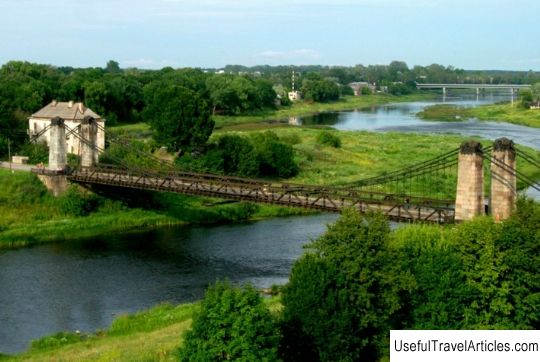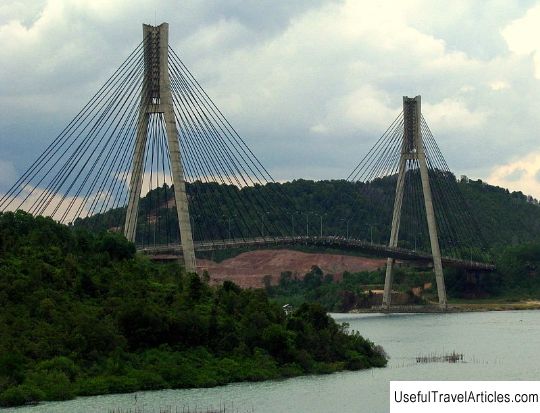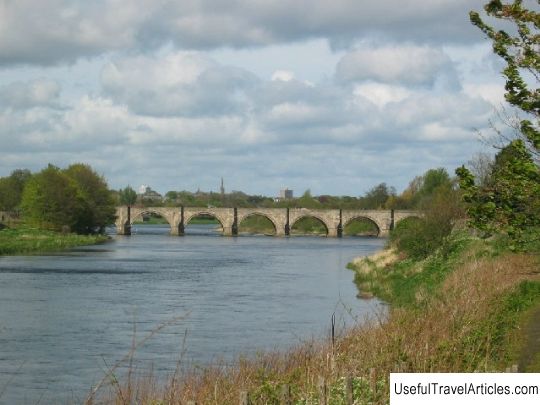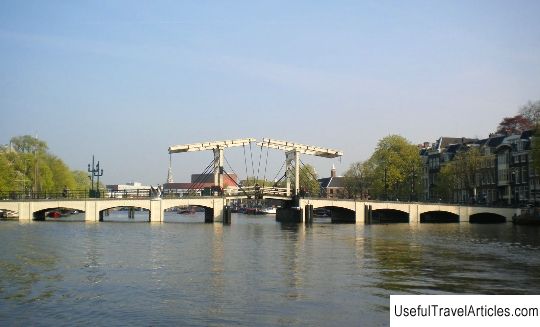Chain bridges description and photos - Russia - North-West: Island

Chain bridges description and photos - Russia - North-West: Island. Detailed information about the attraction. Description, photos and a map showing the nearest significant objects. Photo and descriptionChain bridges are an architectural and construction monument, one of the finest examples of 19th century bridge construction. They are considered unique, since no other such transport bridges of the mid-19th century have survived on the territory of Russia. These two chain bridges are located in the city of Ostrov and connect the two banks of the Velikaya River. Before the metal bridges were built, one could get to the other side by ferry or a temporary wooden bridge. Such a bridge was fragile, it was often destroyed by floods. In addition, it had to be disassembled every year, which caused a lot of inconvenience. In the first half of the 19th century, there was an urgent need to build a permanent, durable metal bridge that would replace the temporary wooden one. Several projects have been proposed for the construction of such a bridge. In 1837-1846, these projects were submitted to experts and city authorities. But only by the middle of the 19th century was it possible to develop a unique project that met all the requirements and could be implemented in the near future. It was a project of M. Krasnopolsky, a railway engineer. He invented a special design of a suspension bridge across the arms of the Velikaya River. It consisted of two parts, the span of each of which was 93 meters. The project was accepted for implementation and the bridge was built in 1851. The author of the engineering development supervised the construction work himself. According to the project Krasnopolsky, the bridge consisted of two suspension bridges. They were located along the same axis and served as a continuation of each other. The basis of each of the bridges was made up of two supporting metal chains, which were attached to two vertical suspensions. Also, a roadway and two stiffening trusses were an integral part of each bridge. The latter served in order to reduce the vibrations that occurred during the movement of people and transport. The chains were thrown over separate stone pillars - pylons that did not have transverse struts. The height of such pillars was 9.88 meters. The pylons were made of well-polished granite blocks that were held together by metal pieces. Chains consist of a pair of branches that are located one above the other. In turn, the branches are composed of flat links. They are located six in each row, they are connected by horizontal bolts. The chains are attached to the pylons with cast iron heads. There are rollers between them, also cast from cast iron. They create a flexible structure that avoids forces that bend the bridge and negatively affect, in particular, stone structures. The chain supports are hidden behind decorative inserts. Chains are anchored in massive abutment elements. The abutment arrays are made of rubble slabs, fastened with a hydraulic solution. The chains are located in the inclined galleries in which the stairs are built. Such galleries, along with horizontal transverse galleries, serve to inspect anchor structures. However, these two unique chain bridges were not without their drawbacks. They were sensitive to dynamic loads. Therefore, the "Main Directorate of Railways and Public Buildings" developed a special regulation that regulated the movement of chain bridges in the city of Ostrov. Finally, On November 19, 1853, the bridges were inaugurated. The event was attended by Tsar Nicholas I. The total cost of all construction work and materials was 300,000 rubles. The engineer himself was awarded, he was awarded the Order of St. Anne of the second degree. In 1926, the bridge required repair. Some elements made of wood were replaced with metal ones. During the Second World War, when the Island was liberated from the Germans in 1944, the bridge on the north side suffered some damage and again required repair. Immediately after the war, in 1945, repairs were carried out and all destroyed elements were restored.        We also recommend reading Management of the Privolzhskaya railway description and photo - Russia - Volga region: Saratov Topic: Chain bridges description and photos - Russia - North-West: Island. |




